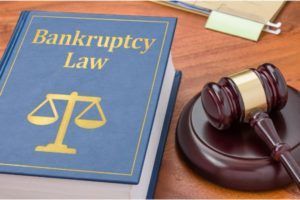Main Differences Between Chapter 7 and Chapter 13 Bankruptcy
 Serious debt can be mentally and emotionally exhausting. When you can’t keep up with repaying loans and credit card bills, bankruptcy can be used to reduce or eliminate debt. There are two types of bankruptcy consumers turn to for relief: Chapter 7 bankruptcy and Chapter 13 bankruptcy.
Serious debt can be mentally and emotionally exhausting. When you can’t keep up with repaying loans and credit card bills, bankruptcy can be used to reduce or eliminate debt. There are two types of bankruptcy consumers turn to for relief: Chapter 7 bankruptcy and Chapter 13 bankruptcy.
In Chapter 7 bankruptcy (or liquidation bankruptcy), most of the filer’s property is sold and used to pay towards their debts. This type of bankruptcy is designed for individuals with limited incomes and no reasonable ability to pay back their debt.
In Chapter 13 bankruptcy (or reorganization bankruptcy), the filer’s property is not sold unless it’s part of a strategy. If the bankruptcy filer completes their court-approved repayment plan, they get the benefits of the plan and they may keep their property. The court-approved repayment plan pays the filer’s creditors a portion of the outstanding debt over a pre-determined length of time (3-5 years). Unsecured debt that remains at the end of a completed Chapter 13 bankruptcy repayment plan may be discharged. When debt is discharged, the borrower is no longer required to pay back the debt.
Quick Overview of Chapter 7 and Chapter 13 and How They Differ:
Type of Bankruptcy:
Chapter 7 = liquidation
Chapter 13 = reorganization
Who Can File?
Chapter 7 – Individuals and business entities
Chapter 13 – Individuals only (including sole proprietors)
Eligibility Restrictions:
Chapter 7 – Consumer debtors must pass the means test, or explain a change of circumstances on why the means test is not giving the true financial picture. Business debtors do not take the means test.
Chapter 13 – Total debt must fall underneath “max limits” in both secured and unsecured categories
How Long Does it Take to Receive a Discharge?
Chapter 7 – In most cases, 3-5 months
Chapter 13 – Generally 3-5 years (upon completion of the repayment plan)
What Happens to Property in Bankruptcy?
Chapter 7 – Trustee may sell any nonexempt property to pay towards debt. In most cases, the trustee does not find anything worth selling which would make a material impact to creditors.
Chapter 13 – Filers keep their property, but must pay unsecured creditors an amount equal to what the unsecured creditors would receive in a hypothetical Chapter 7 case (ask your lawyer).
Does it Allow the Removal of Unsecured Junior Liens from Real Property through Lien Stripping?
Chapter 7 – No
Chapter 13 – Yes (if the requirements are met)
Does it Allow Reducing the Principal Loan Balance on Secured Debts Through a Loan Cramdown?
Chapter 7 – No
Chapter 13 – Yes (if requirements are met)
What Benefits Does it Offer?
Chapter 7 – Debtors can quickly discharge most debts to get a fresh start
Chapter 13 – Debtors can keep their property and catch up on past due payments on secured loans (i.e., mortgage, vehicle, etc.) and nondischargeable priority debt payments (eg taxes and child support).
Are There Any Drawbacks?
Chapter 7 – Trustee can sell any nonexempt property to pay debts, and filers do not have a method of catching up on missed payments to keep their home or vehicle that is in danger of foreclosure or repossession. Trustee may recover from your family members money you may have paid to family and close friends.
Chapter 13 – Monthly payments are required for three to five years, and filers may have to pay back a portion of general unsecured debts.
If you have questions about the difference between Chapter 7 and Chapter 13 or if you are considering filing bankruptcy, please get in touch. Most bankruptcy offices in the Chattanooga area don’t have a single Consumer Bankruptcy Specialist on staff. Our office is the only one in the Chattanooga area with two. You are in good hands with Kenneth C. Rannick P.C.
The post Main Differences Between Chapter 7 and Chapter 13 Bankruptcy appeared first on Kenneth C. Rannick, P.C..











